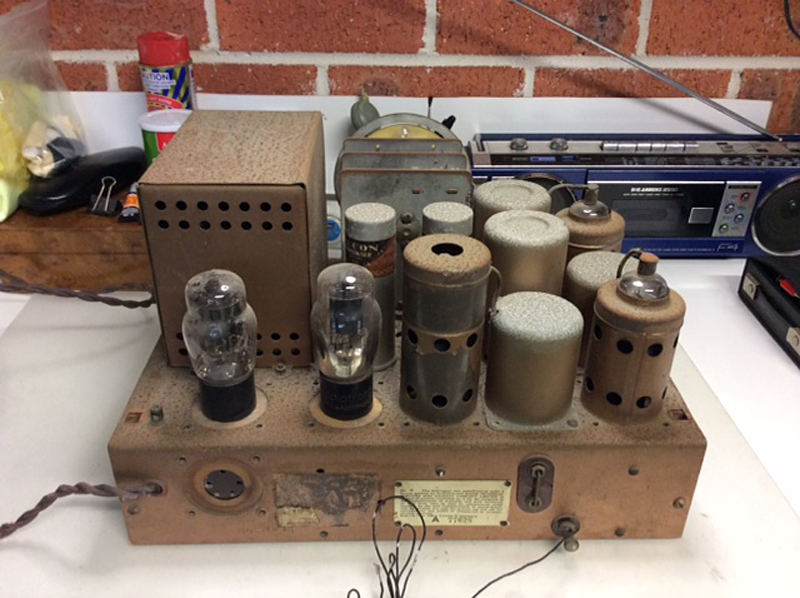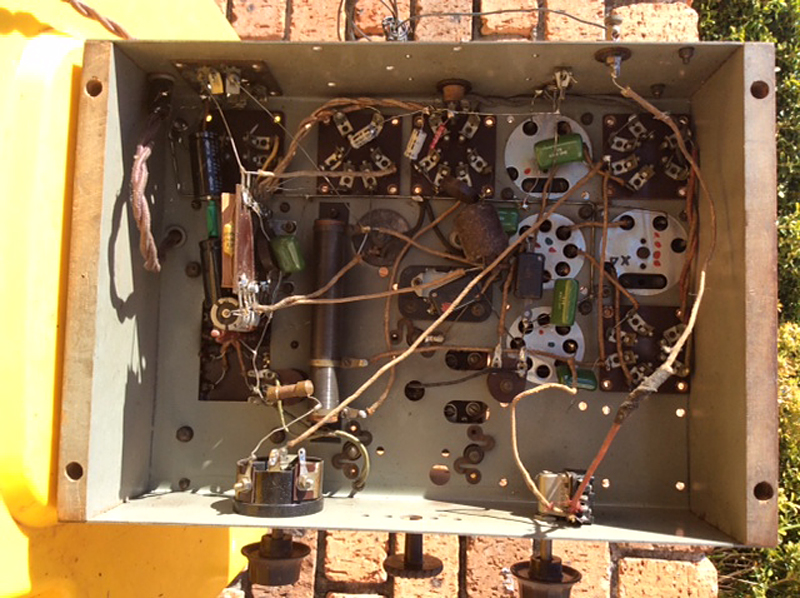Tech Talk
Forum home - Go back to Tech talk
|
STC Model 562 Restoration Chassis.
|
|
|
Return to top of page · Post #: 1 · Written at 12:57:37 PM on 1 July 2017.
|
|
|
|
Location: Sydney, NSW
Member since 22 May 2017 Member #: 2114 Postcount: 120 |
|
Hi All |
|
|
Return to top of page · Post #: 2 · Written at 5:12:14 PM on 1 July 2017.
|
|
|
|
Location: Wangaratta, VIC
Member since 21 February 2009 Member #: 438 Postcount: 5488 |
|
83V has a Cathode sleeve, 80 does not. 80 will produce a voltage surge of around twice the running B voltage until the heaters get the valves to conduct. 83V will not do that to anything like the same extent. |
|
|
Return to top of page · Post #: 3 · Written at 5:21:01 PM on 2 July 2017.
|
|
|
|
Location: Sydney, NSW
Member since 22 May 2017 Member #: 2114 Postcount: 120 |
|
Thanks Marc for your reply, I have run the Dim Lamp test, without the Rectifer 83V and then with it, the light remained dim with 75watt lamp. All the other valves also lit up, some static came through the speakers but could not get much response in tring to tune in a station, though only left it on for a short 5 mins to be safe and was cautious of your comment regarding the 83V current rating and I do not have a 280 which is you suggest is the right valve for this circuit. So I intend to try and get the 280 Rectifer once I can source one( any suggestions)   |
|
|
Return to top of page · Post #: 4 · Written at 5:44:51 PM on 2 July 2017.
|
|
|
|
Location: Belrose, NSW
Member since 31 December 2015 Member #: 1844 Postcount: 2544 |
|
Dim lamp test says your power tranny is probably OK. It might have been caused some slight distress in the past due to the larger rectifier bottle. |
|
|
Return to top of page · Post #: 5 · Written at 8:33:40 PM on 2 July 2017.
|
|
|
|
Administrator
Location: Naremburn, NSW
Member since 15 November 2005 Member #: 1 Postcount: 7470 |
|
Photos uploaded to Post 3. ‾‾‾‾‾‾‾‾‾‾‾‾‾‾‾‾‾‾‾‾‾‾‾‾‾‾‾‾‾‾‾‾‾‾‾‾‾‾‾‾‾‾‾‾‾‾‾‾‾‾‾‾‾‾‾‾‾‾‾‾‾‾‾‾‾‾‾‾ A valve a day keeps the transistor away... |
|
|
Return to top of page · Post #: 6 · Written at 9:54:13 PM on 2 July 2017.
|
|
|
|
Location: Wangaratta, VIC
Member since 21 February 2009 Member #: 438 Postcount: 5488 |
|
A couple of concerns. |
|
|
Return to top of page · Post #: 7 · Written at 8:15:52 AM on 3 July 2017.
|
|
|
|
Location: Sydney, NSW
Member since 22 May 2017 Member #: 2114 Postcount: 120 |
|
Thanks Ian and Marc, I will proceed with further inspection and measurement of the. Valve voltages, I will also check out the voltage rating of the black filter caps and get back to you. |
|
|
Return to top of page · Post #: 8 · Written at 8:27:18 AM on 3 July 2017.
|
|
|
|
Location: Albury, NSW
Member since 1 May 2016 Member #: 1919 Postcount: 2048 |
|
George, |
|
|
Return to top of page · Post #: 9 · Written at 9:14:02 AM on 3 July 2017.
|
|
|
|
Location: Wangaratta, VIC
Member since 21 February 2009 Member #: 438 Postcount: 5488 |
|
Repo cords with three wires are common & used in lighting. I think I have seen Steve advertising them? My concern is with the old rubber, it often rots, or goes brittle & cracks and can start a fire. |
|
|
Return to top of page · Post #: 10 · Written at 9:44:38 AM on 3 July 2017.
|
|
|
|
Location: Toongabbie, NSW
Member since 19 November 2015 Member #: 1828 Postcount: 1345 |
|
Hi George, the power cord is a fright and needs removing and putting in the bin. |
|
|
Return to top of page · Post #: 11 · Written at 10:50:55 AM on 3 July 2017.
|
|
|
|
Location: Sydney, NSW
Member since 22 May 2017 Member #: 2114 Postcount: 120 |
|
Ok so I had a little time to quickly inspect the caps and the 2 Black one in series are rate 500V and 16 μF, and the green ones are rate 650v. These cap ratings should be ok or do I need to consider replacing these? |
|
|
Return to top of page · Post #: 12 · Written at 11:03:38 AM on 3 July 2017.
|
|
|
|
Location: Sydney, NSW
Member since 22 May 2017 Member #: 2114 Postcount: 120 |
|
Marc, |
|
|
Return to top of page · Post #: 13 · Written at 11:23:42 AM on 3 July 2017.
|
|
|
|
Location: Belrose, NSW
Member since 31 December 2015 Member #: 1844 Postcount: 2544 |
|
Hey George, don't replace anything except the power cord until you measure those voltages. Save yourself a lot of trouble! |
|
|
Return to top of page · Post #: 14 · Written at 12:50:32 PM on 3 July 2017.
|
|
|
|
Location: Belrose, NSW
Member since 31 December 2015 Member #: 1844 Postcount: 2544 |
|
George, in case you didn't know, this site is a good place to get valve data sheets - the 2A5 is on this page: |
|
|
Return to top of page · Post #: 15 · Written at 1:38:43 PM on 3 July 2017.
|
|
|
|
Location: Sydney, NSW
Member since 22 May 2017 Member #: 2114 Postcount: 120 |
|
Ian, |
|
|
You need to be a member to post comments on this forum.
|
|

Sign In

Vintage Radio and Television is proudly brought to you by an era where things were built with pride and made to last.
DISCLAIMER: Valve radios and televisions contain voltages that can deliver lethal shocks. You should not attempt to work on a valve radio or other electrical appliances unless you know exactly what you are doing and have gained some experience with electronics and working around high voltages. The owner, administrators and staff of Vintage Radio & Television will accept no liability for any damage, injury or loss of life that comes as a result of your use or mis-use of information on this website. Please read our Safety Warning before using this website.
WARNING: Under no circumstances should you ever apply power to a vintage radio, television or other electrical appliance you have acquired without first having it checked and serviced by an experienced person. Also, at no time should any appliance be connected to an electricity supply if the power cord is damaged. If in doubt, do not apply power.
Shintara - Keepin' It Real · VileSilencer - Maintain The Rage
